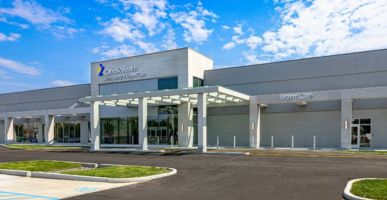Comprehensive Care for Aortic Conditions
The Aortic Center at Catholic Health provides the highest level of care and treatment for patients with conditions affecting the aorta, the body’s largest blood vessel. These include the aorta itself, the aortic valve, aortic aneurysms, aortic dissections and connective tissue conditions.
We know that being diagnosed with and living with an aortic condition can be overwhelming. The Center’s dedicated and compassionate care team provides comfort and listens closely to your needs.
As part of St. Francis Heart Center, Long Island’s most awarded heart program, your care is overseen by nationally recognized cardiologists, cardiothoracic surgeons and vascular surgeons. Our multidisciplinary approach ensures collaboration with genetic counselors, radiologists, and specialty nurses for accurate diagnosis, family screening, and tailored treatment plans. Those plans may include surgical intervention, routine observation and follow-up or lifestyle management.
We make it easy for Long Islanders to find the care they need at Aortic Center locations in Nassau and Suffolk County:
- St. Francis Hospital & Heart Center (Roslyn, NY)
- St. Francis Heart Center at Good Samaritan University Hospital (West Islip, NY)
- Catholic Health Ambulatory & Urgent Care at Centereach (Centereach, NY)
Call 833-67-AORTA (833-672-6782) to schedule an appointment. You can also email aorta@chsli.org.





